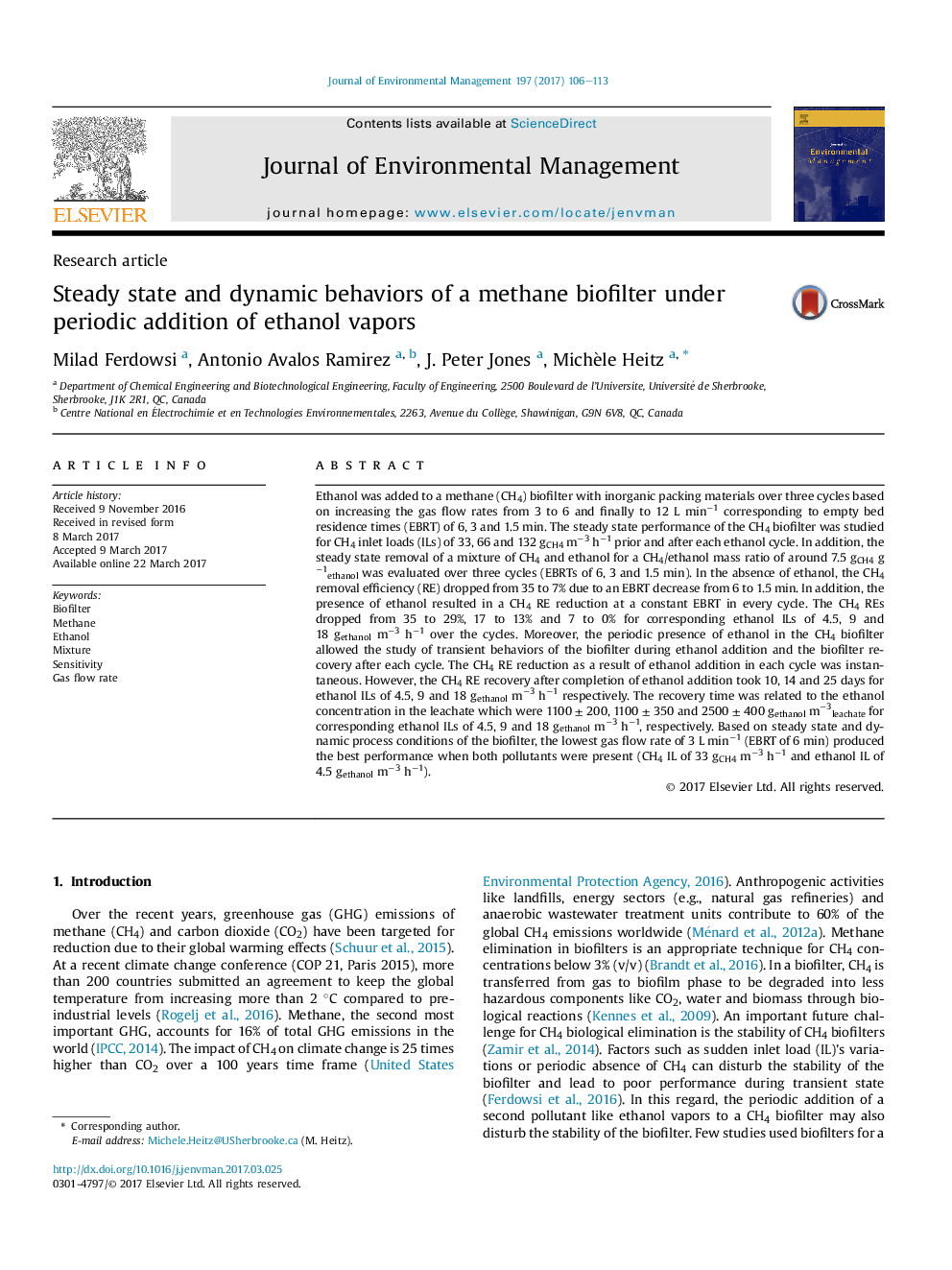| Article ID | Journal | Published Year | Pages | File Type |
|---|---|---|---|---|
| 5116937 | Journal of Environmental Management | 2017 | 8 Pages |
â¢A methane biofilter was studied during three cycles of ethanol addition.â¢The presence of ethanol vapor reduced the removal efficiency of methane.â¢Ethanol was completely eliminated in the lowest section of the biofilter.â¢The leachate of the biofilter contained ethanol.â¢The recovery of the biofilter after each cycle took a few days.
Ethanol was added to a methane (CH4) biofilter with inorganic packing materials over three cycles based on increasing the gas flow rates from 3 to 6 and finally to 12 L minâ1 corresponding to empty bed residence times (EBRT) of 6, 3 and 1.5 min. The steady state performance of the CH4 biofilter was studied for CH4 inlet loads (ILs) of 33, 66 and 132 gCH4 mâ3 hâ1 prior and after each ethanol cycle. In addition, the steady state removal of a mixture of CH4 and ethanol for a CH4/ethanol mass ratio of around 7.5 gCH4 g â1ethanol was evaluated over three cycles (EBRTs of 6, 3 and 1.5 min). In the absence of ethanol, the CH4 removal efficiency (RE) dropped from 35 to 7% due to an EBRT decrease from 6 to 1.5 min. In addition, the presence of ethanol resulted in a CH4 RE reduction at a constant EBRT in every cycle. The CH4 REs dropped from 35 to 29%, 17 to 13% and 7 to 0% for corresponding ethanol ILs of 4.5, 9 and 18 gethanol mâ3 hâ1 over the cycles. Moreover, the periodic presence of ethanol in the CH4 biofilter allowed the study of transient behaviors of the biofilter during ethanol addition and the biofilter recovery after each cycle. The CH4 RE reduction as a result of ethanol addition in each cycle was instantaneous. However, the CH4 RE recovery after completion of ethanol addition took 10, 14 and 25 days for ethanol ILs of 4.5, 9 and 18 gethanol mâ3 hâ1 respectively. The recovery time was related to the ethanol concentration in the leachate which were 1100 ± 200, 1100 ± 350 and 2500 ± 400 gethanol mâ3leachate for corresponding ethanol ILs of 4.5, 9 and 18 gethanol mâ3 hâ1, respectively. Based on steady state and dynamic process conditions of the biofilter, the lowest gas flow rate of 3 L minâ1 (EBRT of 6 min) produced the best performance when both pollutants were present (CH4 IL of 33 gCH4 mâ3 hâ1 and ethanol IL of 4.5 gethanol mâ3 hâ1).
